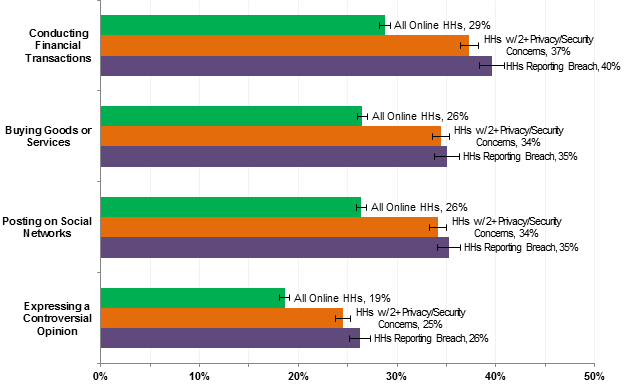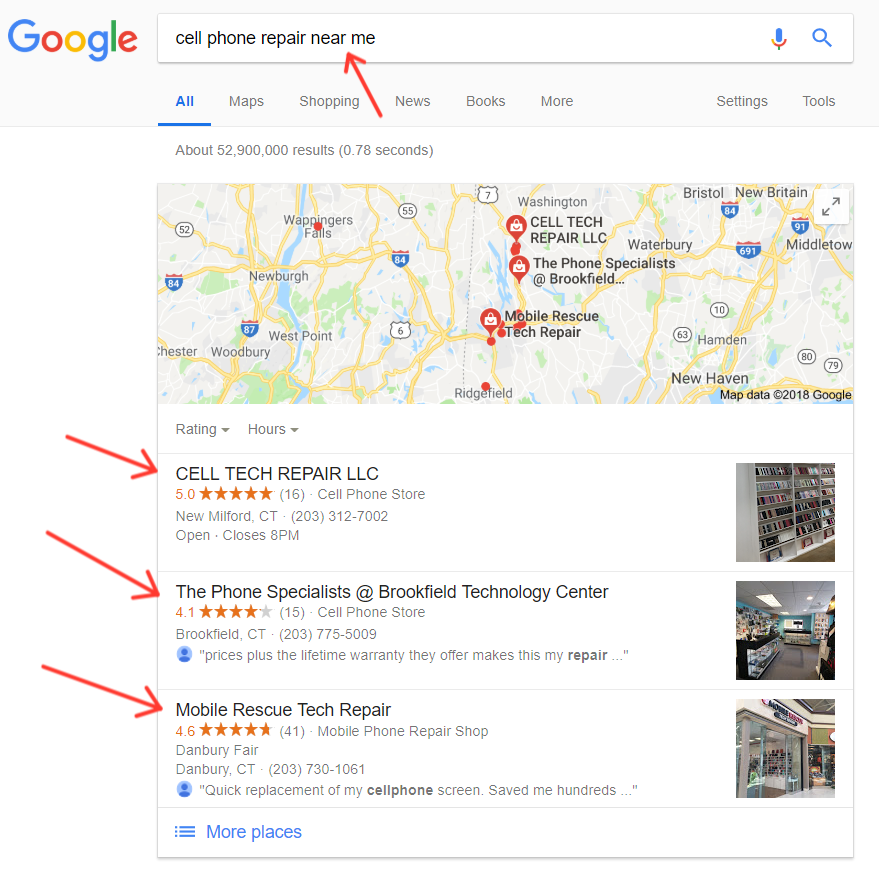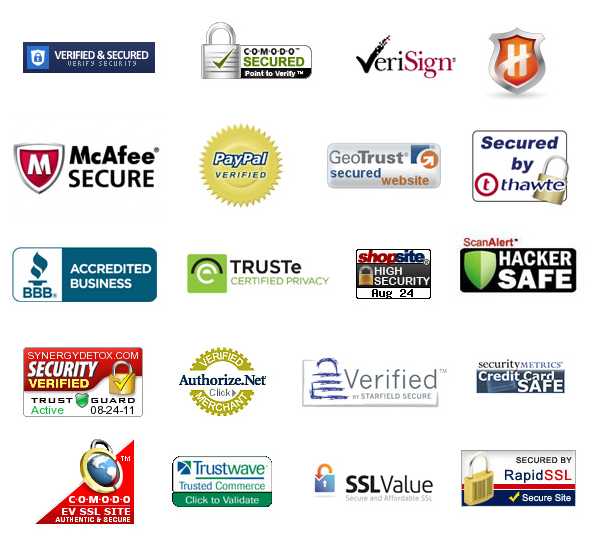How to Reassure Your Users Their Payment Data Is Safe
By
|
Last updated on
In 2016, the Department of Commerce ran a study that uncovered that half of Americans are reluctant to buy things online due to privacy and security concerns. Respondent’s main concerns were identity theft and credit card fraud.

According to Pew Research, 93% of people say controlling who can access their information is important, and 90% say they want control over what information businesses collect.
While purchasing things online is more prevalent than ever, few people trust it implicitly. If your customers don’t believe their payment information is safe with your business, they simply won’t buy, no matter how well you sell them on your product/service’s other benefits.
This means that if you want to improve conversions, you have to reassure your customers that you’re a reputable business who takes data security seriously. In this post, we’ll outline 12 techniques to make your customers comfortable.
1. Offer a Complete Money-Back Guarantee
Nothing makes people feel safer about spending money than knowing they could get it back if they wanted. Make sure your customers are aware that you happily accept returns.
If you sell physical products, have them return the item for a refund. If you sell a licensed product (like a plugin or rights to intellectual property), simply disable/revoke the license. If you sell a digital product like an eBook or course, it’s admittedly harder to take it back without being sure the customer didn’t consume it or copy it before returning, but it’s good to refund their money anyway.
Will some people take advantage of your generosity? Yes, absolutely. But it’s worth the effort and expense to make all of your other customers feel safe.
2. Make Your Business Look Real with Photos of Your Team and Offices
According to SiteJabber, one of the biggest concerns people have when it comes to buying online is whether the website is a real business or a clever scam. After all, if a person wants to commit fraud, setting up an online business is easier than opening a physical business.
Your customers want to know there are real people behind your business who are willing to show their faces and expose their identities. So it’s important to have an About Us page (or something similar) that explains your company’s history along with the names and photos of your team. This way your customers know that if you misuse their payment information, they’ll know who to go after.
3. Never Request Unencrypted Payment Information
You should never ask your customers to send their payment information without encrypting it first. This means you shouldn’t take their credit card information over the phone or via email.
Instead, direct them to a page where they can enter a custom payment amount, or send them to a page with a form you created specifically for them. With WP Simple Pay, you can quickly generate any type of payment form you need so you never have to handle someone’s credit card information.
4. If You Have a Physical Location, List it on Google
Listing your business on Google makes your business more visible on Google’s search results and appear on Google Maps like this:

This also reassures your customers that you don’t only exist online. If they feel your website misused their payment information, they know they have somewhere else to complain.
5. Craft a Security Policy and Link it Somewhere Obvious
Terms and Conditions, Privacy Policy, Data Rights… Whatever you want to call it, create a page somewhere on your website that explains how you use their personal and credit card data. Explain what you do with it and what you don’t do. Make it clear their payment data is encrypted so you couldn’t access it if you wanted.
You can get this information from your payment processor. Link to their policies as well so the customer has all the information they need to overcome their objections.
Furthermore, make this page accessible. A tiny link in your footer isn’t enough. Add a link near the payment form (“Learn more about how we use your payment data”) so they don’t have to search for answers to their concerns.
6. Give Your Customers Delivery Estimates
If you sell something that needs to be physically delivered, give your customers a delivery estimate. If you say it will take 10 days to receive a product, the customer can relax for at least that long before they worry if you ran off with their money.
It’s always better to under promise and over deliver, so give them a delivery estimate that’s longer than it usually takes so the package arrives “early.” Ideally, you should also give them a way to track their package, even if this comes at a small cost to you.
7. Only Ask for the Information You Need
Customers become suspicious when businesses ask probing questions that aren’t necessary. You may think the payment form is a great place to collect some additional data on your customers, but your customers may suspect you’ll use that information to abuse their credit card.
You can make your customers feel safe giving you their payment information by only asking for the information you need to process the transaction. If you want to collect other information about your customers, do it another way.
8. Display Security Banners in Your Footer and on Payment Pages
Shields, badges, logos, and other trust symbols from other trustworthy sites and businesses help customers feel confident about your business. Add certification seals from companies like VeriSign, GeoTrust, Thawte, and the Better Business Bureau to your footer (so they appear on every page) and near your payment forms so your customers can’t miss them.

PCI compliance is an important part of accepting payments, too. If you use a payment processor like Stripe, this is taken care of for you.
If you do business with any other reputable companies, add their logos as well (with their permission) to signal to your customers that other businesses find you trustworthy.
9. Use a Professional Website Design, Copy, and Layout
According to a study by Stanford University, 46% of visitors assess a site’s credibility on the look of the homepage. Amateur websites with wonky layouts, stock photos, and confusing copy make your customers wonder if you’re a fly-by-night business that will disappear after they make a purchase.
The design of your website doesn’t directly impact your site’s security, but it reassures your customers that you’re a legitimate business who cares about their customers’ experiences.
10. Give Your Customers a Way to Contact You
People are suspicious of businesses without an easy-to-contact human presence. Email or live chat may be convenient for you, but your customers will feel safer with a phone number that connects them to a live human.
11. Install an SSL Certificate on Your Website
These days, SSL certificates are a must-have for any website, not just sites that collect payment information. They assure users that all of their information (even things benignly collected by the browser) are encrypted so the website owner never has any information they don’t want to give. They look for the little lock icon near your site’s URL and the “S” at the end of your “HTTPS” in the URL itself.
You can get an SSL certificate from your hosting provider or an independent vendor like DigiCert or Namecheap. You can also get a free SSL certificate such as Let’s Encrypt, which is recommended by Stripe.
(It’s worth mentioning that SSL certificates also improve your rankings on Google’s search result pages. The additional customers you receive from the rankings bump will pay for the certificate. Besides, starting July 2018, Chrome will mark sites without an SSL certificate as not secure.)
12. Admit Data Security Problems Right Away
Even if you take every step to prevent them, data breaches can happen. If a malicious party obtains your customers’ payment information, it’s important to explain what happened to your customers right away. Tell them what steps they should take to protect themselves, what you’re doing to protect them, and what you’ll do in the future to make sure it doesn’t happen again.
Yes, you’ll lose business in the short run. But this type of transparency will strengthen your brand in the long run. Your customers will come to understand that you act swiftly when there’s trouble.
Going Forward
While paying for goods and services online has become more popular than ever, people are still nervous about handing over their credit card information. To maximize conversions, allay their fears about paying through your website by implementing these strategies.



Leave a Reply